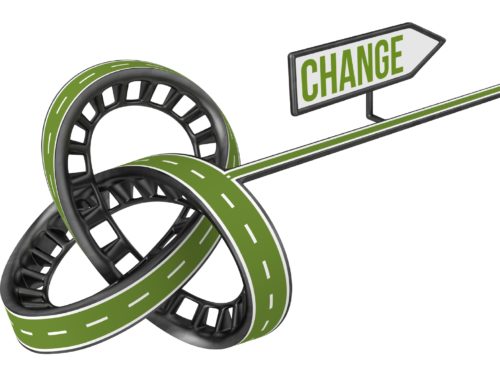Don Draper, the fictional advertising guru on the television show “Mad Men” said, “Change is neither good nor bad. It simply is.”
Good luck convincing your team, customers, or vendors of that.
Leaders want the change they introduce to be universally accepted based on the inherent trust that others have in the motives, competence, and vision for the future. Unfortunately, there are those who respond with benign acceptance or even outright resistance despite your best efforts to cast a positive vision, explain the benefits of the change, and be as transparent as possible.
You are unlikely to completely prevent or short-circuit all resistance, but you can minimize it and build the crucial buy-in you need by understanding the difference between a good change and a bad change from the perspective of those hearing the message.
The Questions to be Answered
Everyone views change through the lens of perception and past experience. If the perception of the leader and past experience with change are good, people are more likely to support the change with little resistance. If either of these is questionable, resistance increases.
Your chances of gaining buy-in for change increase substantially when the answers to the following seven questions are considered and effectively communicated:
- How does it affect me? A major upgrade to your online ordering system will be seen as a good thing if customers and employees see that it makes their lives easier. It will be a bad change if it adds complexity or extra steps. On the other hand, people often have little more than a passing interest in change that doesn’t affect how they operate on a regular basis.
- How does the change move me/us toward something that we want or need? This question is about the “why” of support rather than the impact of the change. A McKinsey study suggests that 80 percent of what leaders communicate about why a change is important doesn’t matter to 80 percent of their audience. You can expect only passive support or even resistance if others don’t see the value for them.
- Are the costs of changing less than the costs of staying the same? Put another way; is the pain of staying the same greater than the pain of changing? Pain creates urgency, and there will be those who evaluate any change that doesn’t solve an immediate problem as a waste of energy and resources—even if the long-term payout is significant. The challenge is to show how the benefit outweighs the cost.
- How much do you know about the change and how much credibility does the person who is communicating it have with you? The scariest changes on the horizon are the one that people do not see coming or those pushed by someone they do not trust. Communicate early and often, and provide opportunities for those affected to address their concerns. Most important, remember that, perceptions about change are heavily influenced by the credibility of the messenger.
- How much influence can I have in the change process? People support what they help create. It isn’t always possible to involve everyone in planning every detail of the change. If not, explain why. And, consider adding opportunities for input if it will increase support.
- Did the change actually produce a result that is different and valuable? This observation from a seasoned manager rings true today: “Just because things are different, that doesn’t mean that anything has really changed.” Changes that don’t produce results lose support. Define results early. Measure them often, and fine tune as needed.
- How does this change affect my overall ability to function and cope? The best leaders are in tune with their organization’s capacity for additional change. There are times when a change that is widely acknowledged as useful will be resisted because of diminished capacity to cope or function.
Don Draper was correct from a philosophical perspective, but he was wrong from a human one. Change, by definition, causes some level of discomfort because of disrupted expectations. If there is no discomfort, there really isn’t much change. You can minimize the resistance and increase that all-important buy-in for change by successfully answering these seven questions.
Randy Pennington is an award-winning author, speaker, and leading authority on helping organizations achieve positive results in a world of accelerating change. To bring Randy to your organization or event, visit www.penningtongroup.com , email info@penningtongroup.com, or call 972.980.9857.





